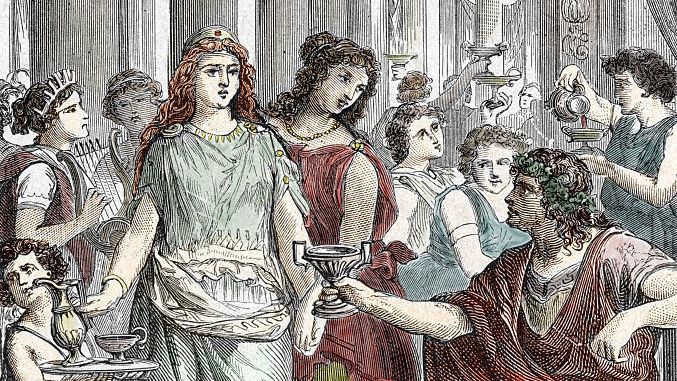Making Wine the Way the Romans Did: These Wineries are Cutting The Additives
In America winemaking is a Fraud. In our country only some companies use public money to control wine transactions. Various agents are added to the wine to control the shelf life. These agents help to destroy and stabilize colors. They also affect the body of the wine. Stabilizing and coloring agents are added to the wine. Sugar is also added to the wine as well.
Not only do clone wines not taste like wine but they are also unhealthy. Without adding or removing Dry Farm Wines is a true wine trader. It contains no added ingredients and little alcohol and sugar content. It uses regenerative agriculture to produce all of its wine which is entirely pesticide-free. This method looks similar to that of the legendary Romans.

Small family farms cultivate natural wines in very small amounts. This method of making wine does not produce much profit this it doesn’t require a lot of investment. The growing industry is home to many wine companies. They produce millions of million wine cartons. They will try to fool you by hiding behind multiple labels and brands and you won’t be able to tell.
They want to feature a farmhouse or a chateau on the label to make you feel like you are drinking from the place. To make most of these wines we work in big wine factories especially in the Central Valley of California.
Roman wines have shocked people all around the world for centuries with their delicious flavors. It might not be common knowledge. The foundation of modern winemaking methods and processes is still present in ancient Roman customs. There are still fields and winemakers around the world who follow traditional practices. These practices include various ways from grape farming to fermenting methods.
Ancient Roman Techniques: A True Revolution in the History of Winemaking Toda
The Romans were trained professionals in many fields so they were never behind. In the same way the Romans had specialized tools and methods for manufacturing wine. The following methods were introduced by the Romans:
Terrier-Awareness- The Romans were the first to recognize the value of geography soil and climate in the making of wine.
Training and Pruning of the Vine: their cutting and training techniques increase the amount and quality of grapes produced. It enhances air circulation and sun exposure.
Amphorae: wine was kept for a long time in these clay jars which make the drink that is still highly respected today.
Terroir-Awareness: A Testament to Roman Ingenuity

The ancient Romans had an excellent knowledge of their environment due to their strong observation skills. They paid close attention to the soil unique soil properties climatic factors and geographic factors. These elements influence the wine’s characteristics after working together. Romans are extremely particular about where to plant their farms. They felt that much better grapes would come from a variety of locations. In modern grape cultivation this is still the case.
Revolutionist Vine Cultivation Practices
To keep good vine health and produce grapes of the highest quality attached to harvest the Romans came up with cutting and training procedures. Romans developed vines using a variety of techniques including the pergola system which provides hanging down. The grapes become more exposed to sunshine as they are easier to pick. This improves the quantity of light that can reach the grapes. When growing grapes the Romans made full use of sunlight to maximize wine production.
Better ventilation: by keeping disease and pests away proper cutting promotes better ventilation which gives grapes good health. These are not old methods. Some modern vineyards continue to use them in the search for quality wine.
Amphora in Modern Wine Making
Amphora is the most popular vessel that Romans used to store wine. This vessel is made of clay and best for storing fermenting and aging wine. Because of the clay oxygen could easily penetrate the wine and give it a texture and flavor.
Natural Fermentation: for natural fermentation processes amphorae is the best. Modern winemakers are again getting interested in organic and natural wines.
Developed Aging: due to the amphorae depth and richness of the wine the oxidation process becomes slow.
Some of these upcoming winemakers use the old ways of vinification. This assists them in making a unique vintage. Every vintage allows a small twist.
Modern Revival and Sustainability
Many wineries are returning to the Roman ways because of new interest in sustainable winemaking. Because they depend more on natural resources and are somewhat less dependent on chemical methods than some of their trendy colleagues they are by nature more sustainable.
Organic practices: the full use of natural fermentation containers such as amphorae is nicely defined in the definition of organic wines.
Less chemical use: cutting the pest organically and using good cutting techniques removes the need to use a lot of synthetic pesticides.
Water conservation: we must convert awareness into wise choices to protect the environment. This requires efficient water management. This is especially important on our planet. We are very easily affected by climate change. Nowadays sustainability is essential not a trend.

Conclusion
Where innovation meets culture. The Romans of ancient were experts in knowing and utilizing technology in the production of wine. The use of traditional methods in winemaking is important for ecologically friendly activities. These methods contribute to greater quality results. We are making good progress in creating the best wines. We are also preserving a millennium-old heritage by mixing traditional knowledge with modern technologies.
Remember that don’t forget whenever you enjoy a glass of wine don’t forget to thank the Romans for their openness and difficulty. Their technique majorly contributed to the wine-making process. Let’s raise a toast to the past and the upcoming future for worldwide wine lovers. Stay updated to read our articles.






